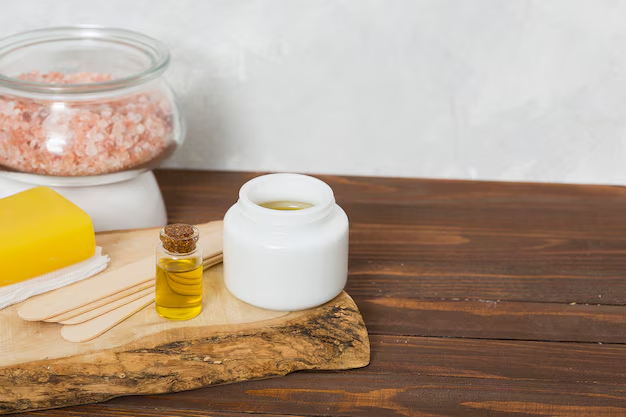Should You Keep Butter in the Refrigerator? Here's What You Need to Know
When you walk into the kitchen for that delightful morning toast, one question might cross your mind: Does butter really have to be kept in the refrigerator? This simple query unleashes a series of considerations from food safety to flavor enhancement, and even historical practices. At the crossroads of tradition and modern safety standards, understanding the best way to store butter can mean the difference between a joyful breakfast and a disappointing culinary experience. Let's dive deep into the buttery world and unravel the intricacies of storage.
The Composition of Butter: A Key to Understanding Its Storage
What is Butter Made Of?
Butter is a dairy product primarily made of milkfat. The standard composition includes about 80% butterfat, with the remaining 20% being water and milk solids. Unlike other dairy products, butter's high-fat content plays a critical role in its ability to resist spoilage when kept at particular temperatures.
Room Temperature Resistant?
Due to its composition, butter can withstand staying out at room temperature better than most other dairy products. The fat content creates a more hostile environment for bacterial growth. However, the margin for safety loosely hinges on maintaining an appropriate environment, limiting exposure to light and air which expedite rancidity.
Should Butter be Refrigerated?
The debate of whether butter should remain in the refrigerator stems from balancing food safety with ease of use and flavor.
For Refrigeration 🌡️
Safety Precautions: For those unsure or worried about bacterial growth, refrigerating butter minimizes risk. Milk solids in butter are susceptible to bacteria, especially if the butter isn't salted.
Extended Shelf Life: Butter can last several months in the refrigerator compared to only a couple weeks at room temperature.
Prevent Melting: Maintains firmness, especially crucial in hotter climates.
Against Refrigeration
Flavor and Spreadability: Cold butter can be hard and unspreadable, whereas room temperature butter is creamier. This matters significantly for flavor and texture.
Cooking Convenience: Softer butter is easier to incorporate into recipes, ensuring a smooth and even texture in baked goods.
So, What's the Verdict?
There's no universal rule for butter storage. It depends on usage frequency, home temperature, and personal taste preferences. However, understanding some common scenarios can help tailor the best storage strategy.
Optimal Strategies for Keeping Butter
Using a Butter Dish or Bell 🧈
A butter dish or bell can be useful for storing butter at room temperature safely. It provides a protective barrier against air and contaminants.
Butter Bell Method: It involves storing butter in a crock submerged upside-down in a water base, creating an airtight seal that mimics refrigeration.
Dish Method: A traditional dish with a cover minimizes exposure, keeping butter fresh for a couple of days.
Partition Your Butter
For practical use, portion your butter. Keep enough in a dish for immediate use, refrigerating the rest to maintain freshness.
Salted vs. Unsalted Butter
Salted Butter: Naturally resists bacterial growth longer due to its salt content. It's a better candidate for being left out at room temperature in many scenarios.
Unsalted Butter: More sensitive to spoilage; best kept refrigerated unless it can be used up quickly.
Climate Considerations 🌞
Those living in warmer climates need to factor in room temperature limits. When temperatures are consistently high, refrigeration becomes crucial in maintaining butter's quality.
Diving Deeper: Related Topics
Butter’s Historical Storage Practices
Before refrigeration was common, people had to be creative. Butter was typically stored in cellars or cool, dark cabinets. In some cultures, the use of clarified butter (where milk solids are removed) like ghee became prevalent due to its longer shelf life.
The Impact of Butter Type on Storage
Cultured Butter: Made with fermented cream, slightly tangier, and contains active cultures. While these cultures might help shelf life marginally, cultured butter typically still requires similar storage practices as regular butter.
Plant-Based Alternatives: Vegan spreads and plant-based "butters" are often less stable, requiring refrigeration due to soy, almond, or other primary ingredients.
Summarizing Key Takeaways 📜
Here are some practical tips and insights for handling butter storage:
⚖️ Balance: Weigh convenience against food safety. Consider how fast your household uses butter.
♨️ Temperature Matters: In warmer climates, opt for refrigeration for extended periods.
🧂 Salt Content: Choose salted butter for its beneficial preservative quality if left unrefrigerated.
⚙️ Use Tools: Employ butter dishes or bells for short-term room temperature storage.
🥄 Portion Wisely: Only thaw the amount of butter needed at a time.
🍽️ Taste vs. Longevity: Find the right flavor/texture balance by occasional refrigerator breaks, allowing butter to soften.
Final Insight: Decide for Your Table
Butter storage isn't a one-size-fits-all approach. It depends on your culinary habits, local climate, and taste preferences. A combination of strategies often yields the best results. Appreciate the creamy goodness of soft butter on a slice of freshly warmed bread and the convenience of structured, firmer bites straight from outdoor picnics. The choice is delightfully yours!
